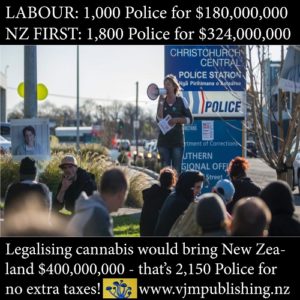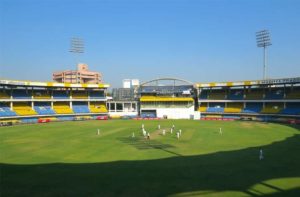
Category: new zealand
The Solution to Low Voter Turnout is to Have Politicians that Aren’t Cheating, Lying Pieces of Shit

There were local body elections in New Zealand last week. You probably didn’t know because no-one gives a fuck except for the control freaks that are fighting for power. They care so much about the low turnout that some of them want to make it illegal to not vote.
This means that if you choose not to vote you must either pay a fine or the Police will put you in a cage (and kill you if you resist). This seems extremely aggressive to those of us who do not benefit in any way from voting.
Take, for instance, my personal situation with medicinal cannabis. John Key will not change the cannabis laws and Andrew Little believes that cannabis use causes brain damage. So, no matter who I vote for, I will have a Prime Minister who thinks it’s fair for the Police to come and smash my head in and put me in a cage for using a medicinal plant they don’t approve of.
It’s much better to not vote and, by doing so, withdraw my consent to be governed by a political system that conducts a War on Drugs against its own people. Especially when the only people who have a chance of taking power under this system have already promised to continue this war to destroy people like me.
This I do not only for myself but out of solidarity with all of the people dispossessed by the current New Zealand political system. If my only choices are to give my power to a cheating, lying piece of shit waving a blue flag or a cheating, lying piece of shit waving a red flag, then I will keep my power for myself!
Dr Bryce Edwards, a Massey University politics lecturer and a heavily indoctrinated and brainwashed man, says “[low voter turnout] is a terrible thing. I don’t think there’s really anyone saying lower voter turnout is a good thing”.
Meanwhile, outside of the ivory tower, paedophiles get lighter sentences from the New Zealand “Justice” System than medicinal cannabis growers.
I’m saying that low voter turnout is a good thing, because it is a sign that the population does not consent to the abuses committed against it by the ruling class.
Is it any wonder we’ve lost faith in a political system that gives lighter sentences to paedophiles than it does medicinal cannabis growers? Why should we continue to vote and give our power to the same political system, and to the same clueless old narcissists that brought this atrocious state of injustice about?
Much better to not vote, and in doing so delegitimise the entire system. This is why the control freaks are ultimately afraid of – a population that does not fall for the illusion heavily enough to give away their power to the control freaks.
Not voting doesn’t just mean not voting – it means having the gumption to solve the social problems that politicians exploit to swindle power before that power is swindled. This means looking after vulnerable members of your community before the control freaks start making laws to ban everything that they have not explicitly given permission for.
It means mowing an old person’s lawn. It means smiling at the crazy guy with the haunted look. It means making a donation of time or money to the RSPCA. It means talking honestly with people you know about what’s really going on in the world.
If we all stopped falling for the lies, we could have a world in which the control freaks would dissipate into the gutter like the filth they are.
Black Caps in India 2016: Third Test Preview

After some doubt, it now looks like the Third Test between the Black Caps and India will proceed as planned, at Indore between 08 and 12 October. For the Black Caps, for whom the series is lost, this match is about putting into practice what has been learned from the first two Tests towards the goal of winning some respectability.
The Black Caps have not been poor on this tour. Far from it. Barring a disastrous Day 3 in the 1st Test and Day 2 in the second, they have been India’s equal.
In Kanpur, the Black Caps looked well ahead at the end of Day 2. In reply to India’s 318 they were 152/1. Day 3 was a disaster, losing 9 wickets for 110 and then letting India get to 159/1 by stumps.
Likewise in Kolkata. The Black Caps had India at 239/7 at the end of Day 1, but a horror Day 2 saw India put on 77 for their last 3 wickets and then get the Black Caps 128/7 at stumps. Although the Black Caps lost by almost 200 runs they did take 20 wickets, which is a good sign for a visiting team in India.
If the Black Caps can get through this third Test without such a horror day they could well win.
There’s a solution to the Martin Guptill problem. It’s called Nathan Astle. The dashing ODI opener was not even considered for a Test opening spot, despite being good enough to score 16 centuries in the shorter format. Astle began his serious Test batting career at 5 and stayed there.
Guptill has been unlucky because positions 3, 4 and 5 have been sewn up for years and so the only realistic option was to open. Now with Brendon McCullum no longer with the side, there is a gap at 5 that Guptill could potentially fill. Not only will an older red ball will behave a lot more like the white ball that he is used to batting against, but he is simply far too talented a batsman to leave out of the side just because he was not a great success as opener.
With a Test average of 25, Henry Nicholls probably hasn’t done enough to cement the No. 5 position, and with several impressive young bats coming through he might not get much of a chance. Nicholls’s technique might be more suited to the opening position, and his 76 against Dale Steyn and Vernon Philander with essentially a new ball in South Africa recently suggests that he has enough potential there to be worth a look.
With Trent Boult fully entrenched as The Black Caps’s premier paceman and with Neil Wagner, who at a bowling average of 29.63 has much better returns, it appears that Tim Southee is now competing with Matt Henry for that third seamer spot.
Matt Henry may rightly be ahead of Tim Southee now. One match with six wickets at 17.50 could be written off as lucky, but anyone watching the Second Test might well have remarked that Henry’s pitch map was much better than Southee’s, forcing the batsman to play much more and without the regular boundary balls.
Tom Latham seems to have difficulty concentrating past a certain point. He is building a Flemingesque record with an average of 38.38, 9 fifties and 5 centuries. Whether or not he can overcome this will determine if he can become a great opener along the lines of Richardson or Turner.
BetFair does not consider the Black Caps to have much of a chance: they are paying $6.20 to win at the exchange, compared to India’s $1.60 (the Draw is $4.60).
Fixing New Zealand’s Public Holiday and Festival Schedule

The most absurd thing I ever saw in my life was in Brisbane in mid-December, 2001. On a sweltering Queensland summer day I walked to the corner dairy to buy a soft drink. The neighbourhood I was staying in was having a competition; the object being to best decorate your house for the season.
What the season apparently meant to Queenslanders was evident by the piles of fake snow, strings of bright lights and plywood sleds replete with papier-mache reindeer and a Santa in a thick red coat. It’s no better in New Zealand, because the core problem is that we celebrate Christmas in entirely the wrong season.
Christmas is known as Yule in Northern Europe, from where we inherited the cultural tradition. The Yule festival is celebrated at the same time of the calendar, which is of course the middle of winter in Northern Europe. The reason why this festival evolved in the cultures of the North is because, on the 24/25th of December in the Northern Hemisphere, the Sun noticeably begins to climb from the nadir it reached a few days previously at the Winter Solstice.
This means that Christmas has a spiritual meaning that makes perfect sense to a Northern European in late December: the time of peak darkness has passed, and now light returns to the world. This is why the Yule festival is characterised by lights. The lights symbolise the human spirit that burns brightly in even the darkest times. And now that the darkest times are over, it’s time to rejoice.
The reason why Christmas is the “season of good cheer” is precisely because it represents a point in the natural cycle of the seasons at which the most difficult period, as measured by length of the day, has been overcome. It’s also the natural time for people to come together because it is very cold. Coming together in the cold to celebrate the return of the light in the days after the Winter Solstice has probably been a tradition for thousands of years before Abrahamism came to Europe and called the festival Christmas.
Therefore, celebrating Christmas in the middle of summer playing cricket and drinking cold drinks at the beach while stinking of sunscreen makes no sense at all. If anything, midsummer is a time of mourning in the European North.
Likewise Easter. The reason why we celebrate Easter with chocolate rabbits even today is because Easter is a fertility ritual (the word Easter is connected to the word estrogen, the female fertility hormone, and is celebrated at the full moon, the Moon being also a symbol of the feminine).
Celebrating a fertility ritual in early April makes sense if you live in the Northern Hemisphere. It is, after all, the advent of spring there, and after a long and dreary winter people are coming outside again and noticing how nice the girls look with less clothing in a bit of sunlight, especially if you’ve just spent a long winter with nothing but your sisters, mother and grandmother for company. In Northern Europe this is still commonly celebrated with a dance around the maypole (although this happens on Midsommar in Sweden and not early May), an obvious phallic symbol.
Halloween is another example that makes no sense. Although this is not a public holiday and is not likely to be, the theme of it suits the Northern Hemisphere and not the South. The last day of October is also about six weeks after the Autumn Equinox in the Northern Hemisphere, and therefore marks the day when the warmth begins to follow the light into the depths of winter.
This is why it is themed with symbols of death and foreboding. The point of the ritual is to treat the small death of winter as something fun and light-hearted, in order to lessen the sorrow one feels towards one’s inevitable big, and final, death. One enjoys Halloween to the degree that one is unafraid of death – this is why it is usually celebrated mostly by the young and by the old.
In New Zealand it feels ridiculous to drive down a street in late October when the evenings are just becoming very bright and to see young people in dark clothing trying to look spooky. We ought to celebrate Halloween on the last day of April, when the shadows are becoming long and the trees are red and yellow. This would make sense as the approaching winter would provide the right backdrop for a ghoulish festival.
My conviction is that New Zealanders of all cultural heritages must accept that if they are loyal to this country then they are Polynesians first and any cultural traditions from ancestral lands must be adapted to Aotearoa. The penalty for failing to do so is cognitive dissonance and a deeply unfortunate disconnection from the spirituality of the natural world.
In so far as we celebrate British seasonal events in a Southern Hemisphere country it appears as if our hearts are still back in Britain. The first thing we should correct in order to fix this is to celebrate our public holidays on days of the calendar that make sense for New Zealand, not for London.
After all, if there’s one thing that New Zealanders of all ancestries can agree on, it’s that New Zealand is dark in June and cold in August, and bright in December and warm in February.
Suggestion for a 14-day public holiday schedule:
(1) 01 JAN – New Year’s Day.
(2) 06 FEB – Waitangi Day.
(3) Some weekend in late March to serve as Queen’s Birthday Weekend (we don’t actually celebrate the Queen’s Birthday on the Queen’s Birthday so can change this).
(4) 25 APR – ANZAC Day.
(5) 31 APR – A Southern All-Souls Eve along the lines of the Northern European Halloween.
(6) Matariki in late May/early June – this is extremely important as it represents the first efforts of anyone in New Zealand to associate a time of spiritual practice with a regularly occurring natural phenomenon (the rise of the Pleiades cluster when viewed from NZ).
(7, 8, 9) 3 days over winter to replace Christmas, probably the 24 – 26 JUN. This would mean we have time off to celebrate having survived the winter with our friends and family.
(10) 09 AUG – This is the day that George Nepia played his last All Blacks Test. The point of a national holiday on this date would be to celebrate New Zealand’s sporting achievements in all disciplines and to celebrate how sport has broken down barriers of class and race in New Zealand. It would also break up the period between Christmas and Easter.
(11, 12) 2 days for Easter – the Friday before the weekend closest to the first full moon immediately after the autumn equinox in late September and the Monday immediately following that. This sounds complicated but it’s literally the reverse of what is done now. This would therefore fall in late September on most occasions.
(13) 4th Monday of October – Labour Day.
(14) 31 DEC – New Year’s Eve.
